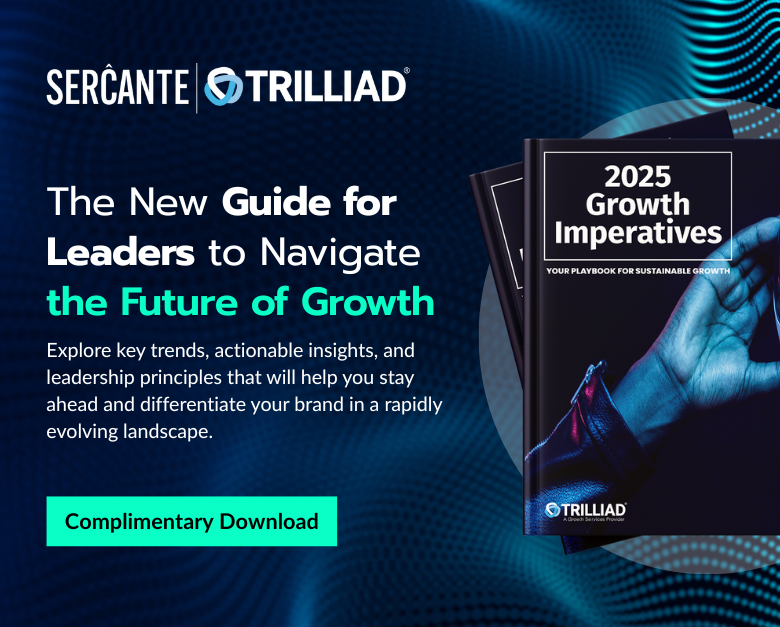ICYMI: Salesforce dropped a hot product announcement yesterday. And she’s called Marketing Cloud Growth Edition.
There was a flurry of blogs and social postings following the official drop of the Salesforce press release, notably:
To hear some talk, MC Growth Edition is going to instantly change everything and be the best thing in the world.
On the flip side of the spectrum, I’ve seen some hyper-skeptical commentary around MC Growth Edition. “It’s SMB only”, “It’s going to take years to catch up”, and “You don’t have to worry about this now,” (I’m sensing a twinge of fear/self-doubt intermingled in these statements, though).
Like most things involving extreme opposites, the current reality and answer to “What is Marketing Cloud Growth Edition?” is somewhere in the middle of these two takes.
Let’s dig into some of the nuances here and read the tea leaves. If I could boil this down to a top 5 highlights, they would be:
1) Marketing Cloud Growth Edition is built on “Core,” and that’s a fundamental advantage for innovation
Marketing Cloud Growth Edition is built on the Einstein 1 platform — aka the same underlying infrastructure as Sales Cloud, Service Cloud, Experience Cloud, Data Cloud, and recently, Commerce Cloud.
Marketing Cloud Engagement is NOT on core today (but it’s integrated).
Pardot / Marketing Cloud Account Engagement IS on core… kind of. It’s a blend of on and off-core. Call it “near core” if you need another buzzword for your collection.
Many long-time Pardot customers have been rallying around the vision for “Pardot on Platform” for the last several years. And if you’ve been watching closely, you may have noticed that many of the product enhancements delivered in recent years have been either built-in core, rely heavily on components from core, or had prerequisites of things like enabling SSO with core.
Why does this “on core” distinction matter, though? The simplified answer is that as new things are released, you can take advantage of those within other “on-core” tools. Examples would include things like Flow for automation, UI enhancements like Path, improvements to Salesforce reporting functionality, etc. These product innovations can be leveraged for the most part across objects and clouds that are built on core.
So TL;DR — MC Growth Edition being on the Einstein 1 platform means that when enhancements are added to Salesforce and Data Cloud, we don’t have to wait for an integration to come out to use them in the marketing department. We will be able to take advantage of these enhancements immediately, in many cases.
2) The significance isn’t what’s available now — it’s about the vision
In subsequent posts on The Spot, we’re going to be getting way in the weeds of how MC Growth Edition works and outlining functions and constraints of the current builders.
There will be edition comparison guides.
Screenshots.
Pros & cons lists.
But amidst all of this, I would emphasize that what’s generally available now isn’t the important thing to look at unless you are actively evaluating a platform to purchase in the next 30 days. The exciting thing about MC Growth Edition is about where the product is headed.
Salesforce has an aggressive vision for this, and looking at the speed with which Data Cloud has grown, I’m betting on them to move FAST.
3) Expect to see a focus on unifying builders & tooling
A friction point for existing customers is there are usually several ways to do things in different clouds. We have two email builders in Pardot. Another email builder in Salesforce. And an entirely different content builder in Marketing Cloud Engagement.
Expect to see these tools start to converge, with Marketing Cloud Growth Edition as the first mover for shared functionality.
One email builder.
One landing page builder.
One segmentation engine (built on Data Cloud).
(P.S. The buzzword for this concept is “composable services” — as a new tool is built, expect to see it designed in a way that it can be used and leveraged in multiple parts of Salesforce. We’re already seeing examples of today for more behind-the-scenes things of Pardot/Marketing Cloud, like the backend email sending engine.)
4) This makes AI real
I’ve been listening quietly to all of the headlines about generative AI for the last year.
Listening, because as Thumper says, “if you can’t say something nice, don’t say nothing at all.”
The picture has been painted like this:
- You’re working with smart marketing automation tooling
- You log in and the system can suggest a target audience for you
- It can suggest a product offer for you
- Heck, it can write your content from a campaign brief
- AI tells you when to send your email
- AI makes it omnichannel
- Campaign results come flooding in… and yes, AI analyzes that for you too
- We cheers with our Mad Men era old fashioneds because the computers do all of the heavy lifting for us
That sounds nice, but also super unattainable with today’s tooling.
The elephant in the room: No one’s data is that organized. Systems remain super siloed. And the systems most customers are on today don’t solve for that.
Until now.
Marketing Cloud Growth Edition is the vision for how we move past that. It’s the beginnings of the shared infrastructure and unified data that get us to the AI-shaped pot of gold at the end of the rainbow.
Bring on the robots.
5) Existing customers are going to see the benefits too… without switching
Customers new to marketing automation, or new to marketing with Salesforce should absolutely evaluate MC Growth Edition.
Pardot and Marketing Cloud Engagement customers should wait a bit before asking themselves “Should I switch?” Largely because they may find they get some of the “good stuff” without having to switch.
We had two team members (one from a Pardot background, and one who’s an OG ExactTarget pro) participate in the pilot of MC Growth. What we saw is that Salesforce is thinking very carefully about how to share the value of the development work being done in MC Growth with its existing customer base.
Over the next few months, customers will start to see new features you can opt into or just turn on in your org. It’s not going to be a “migration” or a requirement to move anything — just a gradual transformation and growth in the tools that are available to you as more of these composable services are built and shared.
The future looks bright
One thing is for sure — the next chapter is going to be anything but boring for marketing technologists on the Salesforce platform! I’ve never been more excited to grow in this ecosystem <3











